
 Home > 제품소개 > Positive ebeam resist
Home > 제품소개 > Positive ebeam resist
- DisCharge H2O, H2OX2, H2OX4 conductive resist
- DisCharge AdvantageDisCharge Properties
- Efficient charge dissipation in EBL on a broad range of resist
materials (PMMA,HSQ, mr-PosEBR, CSAR 62, ZEP, 520A, SML).
- Improved shape fidelity and positional accuracy of EBL patterns
in resist on insulated substrate materials such as SiO2,
fused silica, quartz, PDMS, etc.
- Water based formulation with excellent wetting properties.
- Simple spin coat application.
- Easy residue free removal by water or IPA rinse.
- Competitively priced. Idea for both research and industrial
applications.
- Manufactured in USA with global distribution network.
- 2 year shelf life at room temperature. Highly stable permanently
charged non-polymer formulation. No filtration required prior
to use.Product name DisCharge H2O DisCharge H2OX2 DisCharge H2OX4 Solvent base Water Water Water Film Thickness 40 nm
(1000 PRM)80 nm
(1000 RPM)165 nm
(1000 RPM)Resistivity
(Averaged)7.30 Ωm 7.65 Ωm 9.48 Ωm Shelf Life
(at RT)2 years 2 years 2 years Spin CurvesSheet Resistance vs Thickness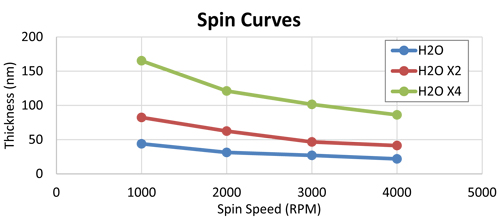
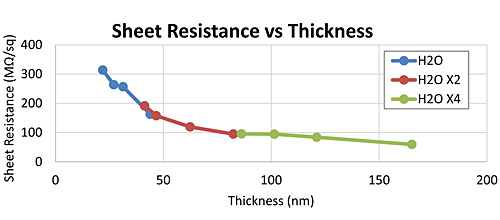
Evidence of DisCharge Anti-Charging Properties300 nm PMMA 950 A4 / 1 mm PDMS / bulk Si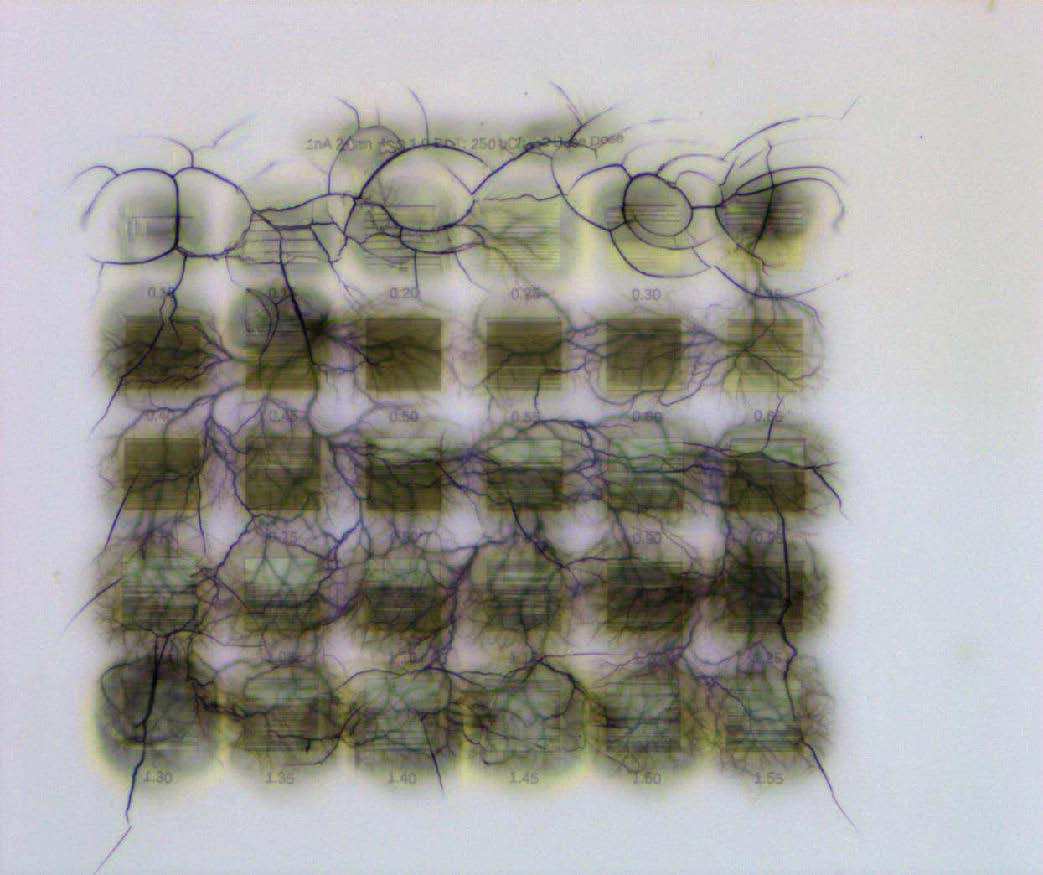 Without DisCharge: charge accumulation and sudden charge dissipation caused by exceeding the dielectric breakdown strength of the PDMS to the Si substrate resulting in significant cracking of the resist.
Without DisCharge: charge accumulation and sudden charge dissipation caused by exceeding the dielectric breakdown strength of the PDMS to the Si substrate resulting in significant cracking of the resist.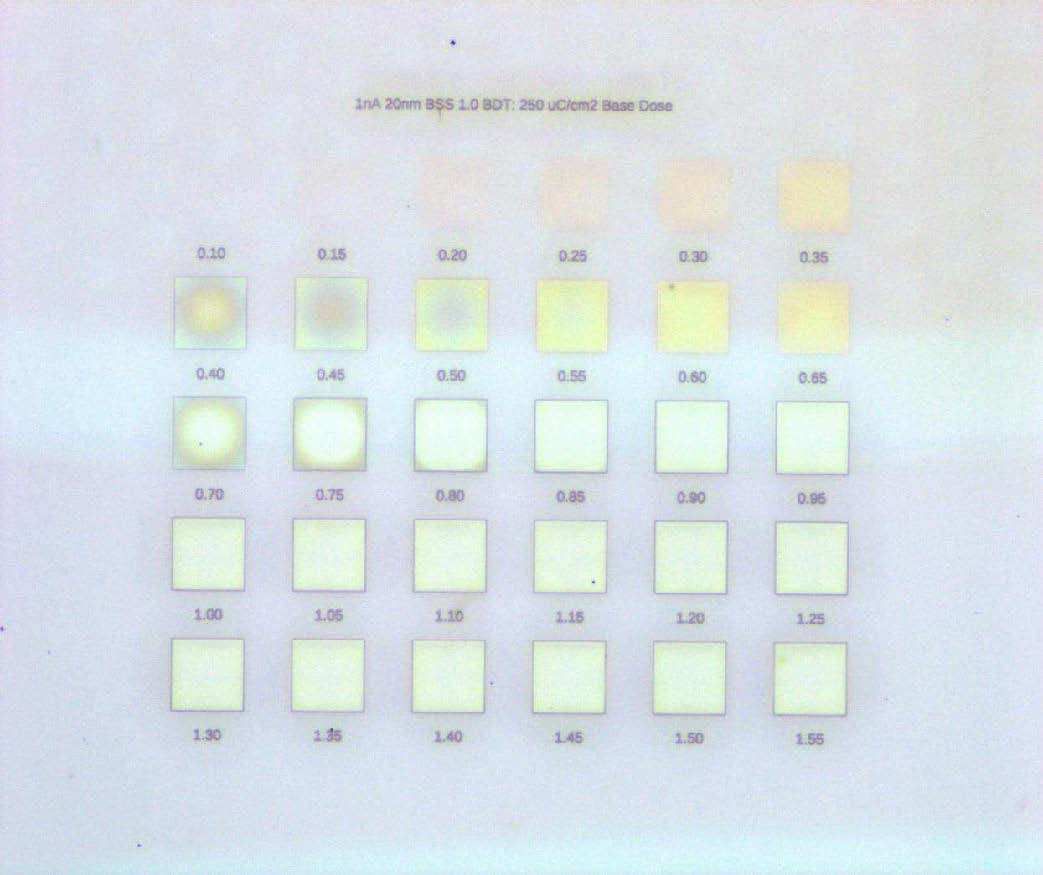 WITH DisCharge: no charge accumulation, resulting in expected image with no harm to the PDMS.300 nm SML300 on glass Slide
WITH DisCharge: no charge accumulation, resulting in expected image with no harm to the PDMS.300 nm SML300 on glass Slide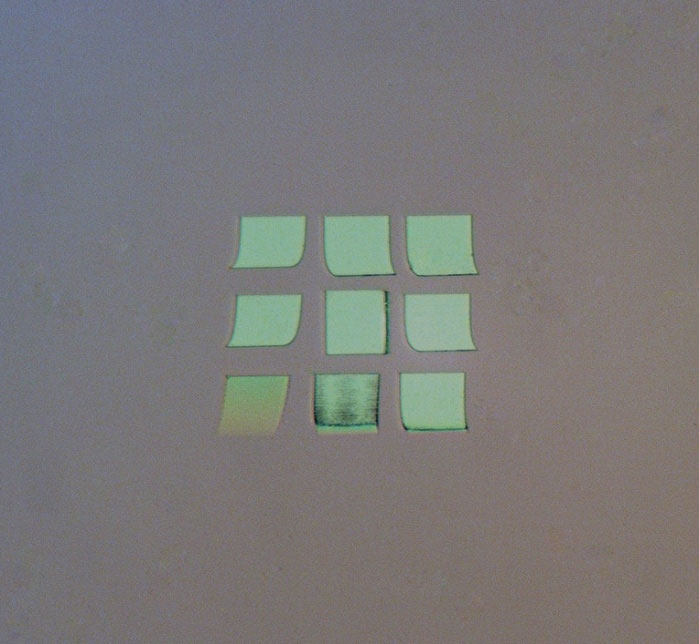 Without DisCharge H2OX2: charge accumation leading to poor shape fidelity of the contrast curve pattern.
Without DisCharge H2OX2: charge accumation leading to poor shape fidelity of the contrast curve pattern.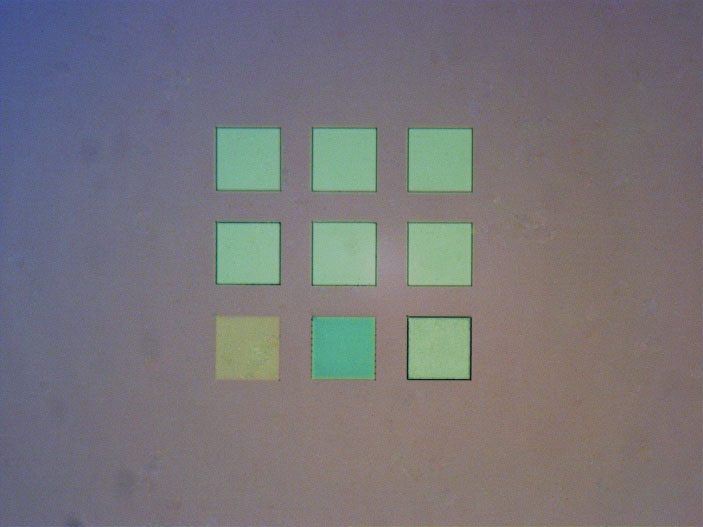 WITH DisCharge H2OX2: no charge accumulation is observed. The structure appears as expected.300 nm mr-PosEBR on Glass Slide
WITH DisCharge H2OX2: no charge accumulation is observed. The structure appears as expected.300 nm mr-PosEBR on Glass Slide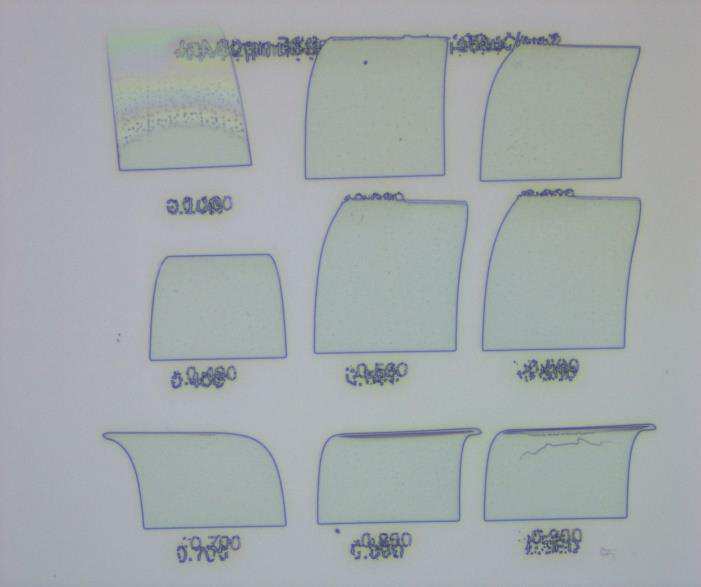 Without DisCharge: charge accumation leading to poor shape fidelity of the contrast curve pattern.
Without DisCharge: charge accumation leading to poor shape fidelity of the contrast curve pattern.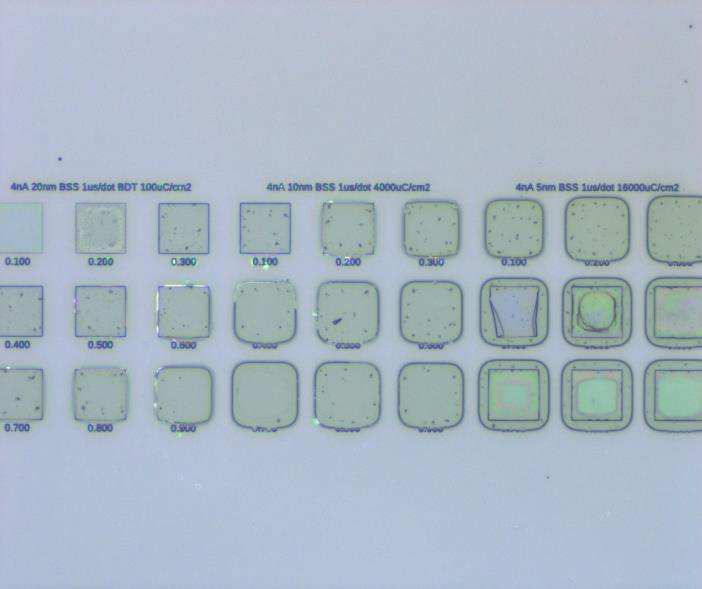 WITH DisCharge: no charge accumulation is observed. The structure appears as expected. Crosslinking of the positive resist is especially observed at high doses.200 nm ZEP520A on Glass Slide
WITH DisCharge: no charge accumulation is observed. The structure appears as expected. Crosslinking of the positive resist is especially observed at high doses.200 nm ZEP520A on Glass Slide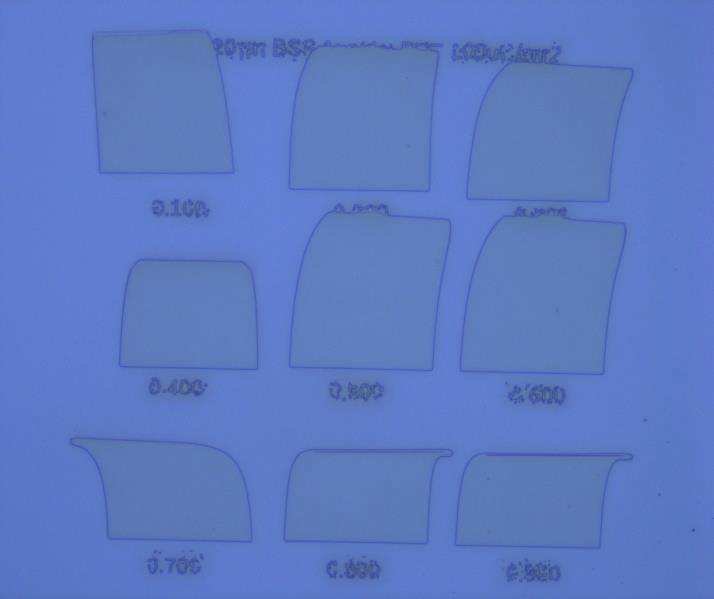 Without DisCharge: charge accumation leading to poor shape fidelity of the contrast curve pattern.
Without DisCharge: charge accumation leading to poor shape fidelity of the contrast curve pattern.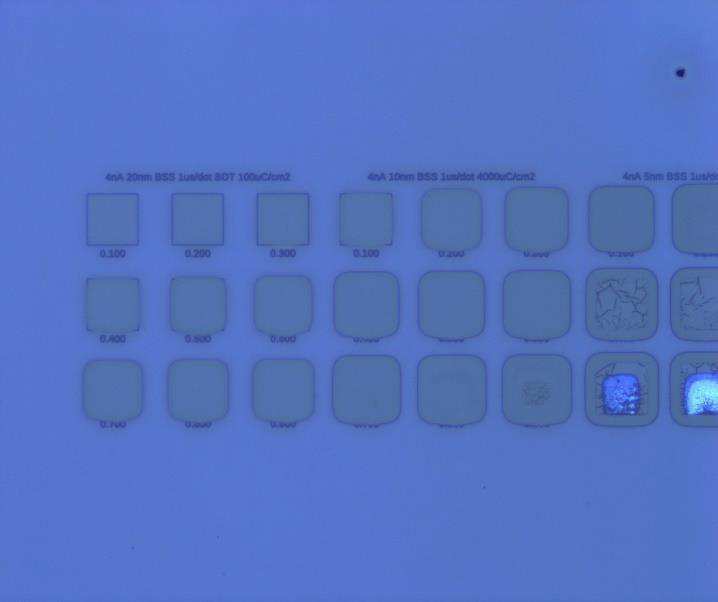 WITH DisCharge: no charge accumulation is observed. The structure appears as expected. Crosslinking of the ZEP520A resist is especially observed at high doses.300 nm CSAR 62 on Glass Slide
WITH DisCharge: no charge accumulation is observed. The structure appears as expected. Crosslinking of the ZEP520A resist is especially observed at high doses.300 nm CSAR 62 on Glass Slide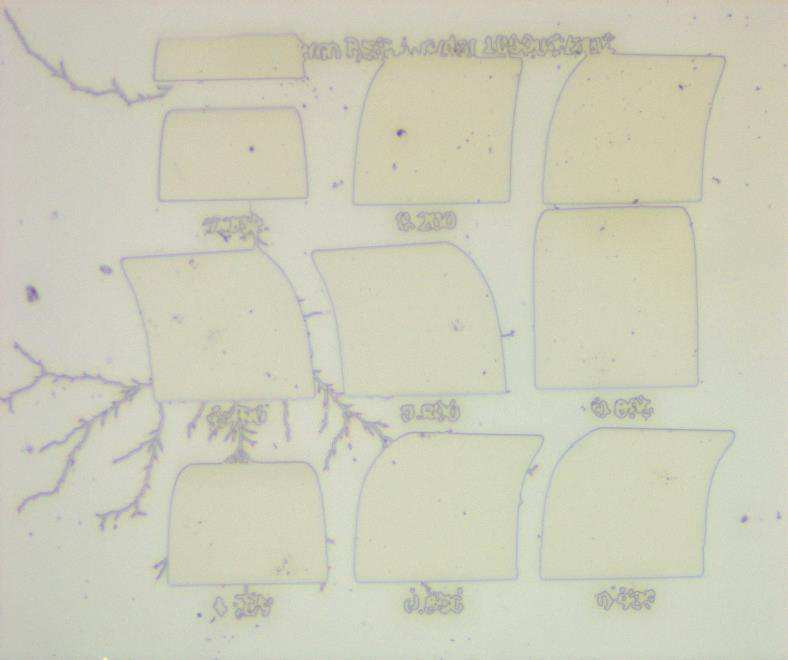 Without DisCharge: charge accumation leading to poor shape fidelity of the contrast curve pattern.
Without DisCharge: charge accumation leading to poor shape fidelity of the contrast curve pattern.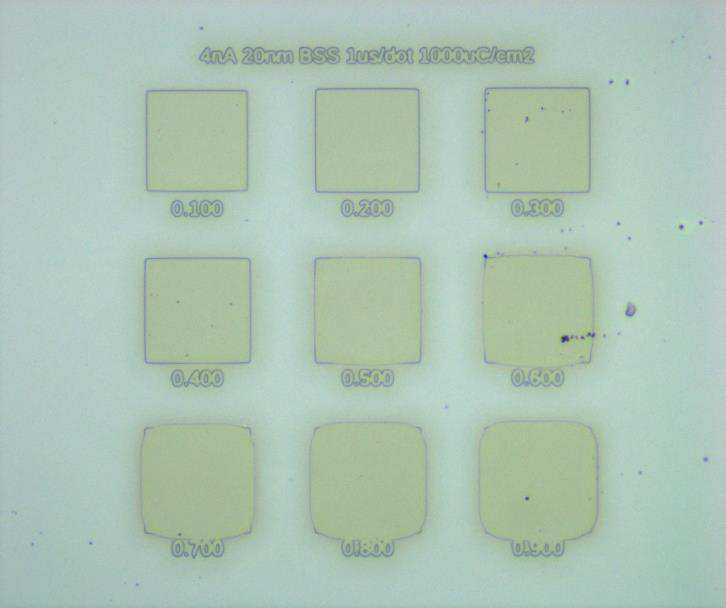 WITH DisCharge: no charge accumulation is observed. The structure appears as expected. Crosslinking of the CSAR62 resist is especially observed at high doses.300 nm ZEP520A on Fused Silica
WITH DisCharge: no charge accumulation is observed. The structure appears as expected. Crosslinking of the CSAR62 resist is especially observed at high doses.300 nm ZEP520A on Fused Silica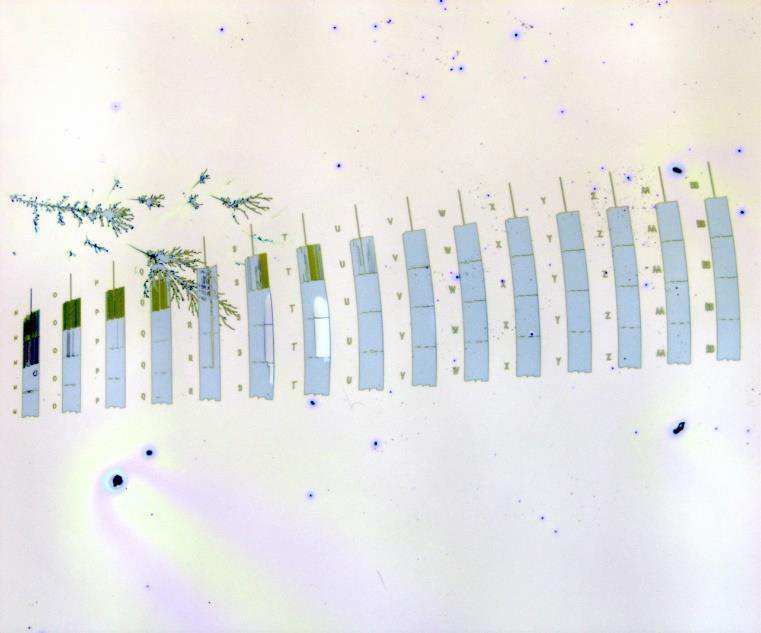 Without DisCharge: charge accumulation resulting in poor shape fidelity of the tower pattern.
Without DisCharge: charge accumulation resulting in poor shape fidelity of the tower pattern.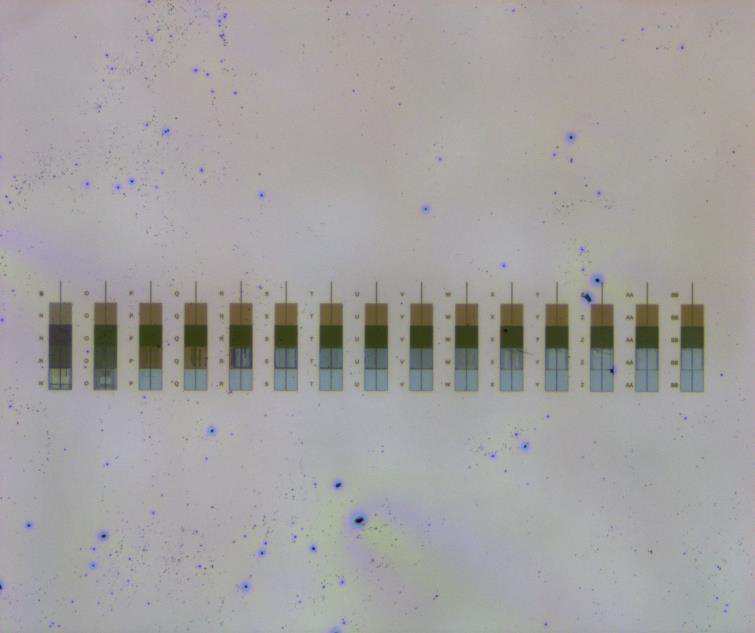 WITH DisCharge: No charge accumulation is observed. The structures appear as expected.
WITH DisCharge: No charge accumulation is observed. The structures appear as expected.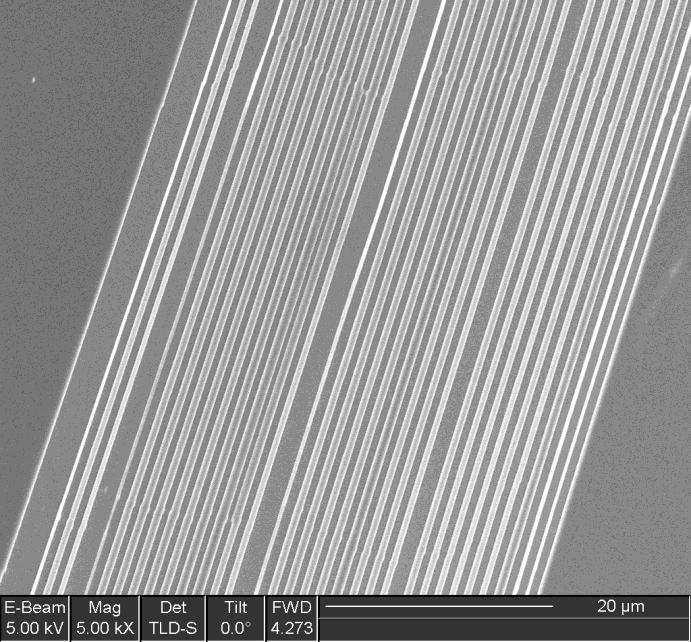 Without DisCharge: charge accumulation resulting in poor shape fidelity of the tower pattern
Without DisCharge: charge accumulation resulting in poor shape fidelity of the tower pattern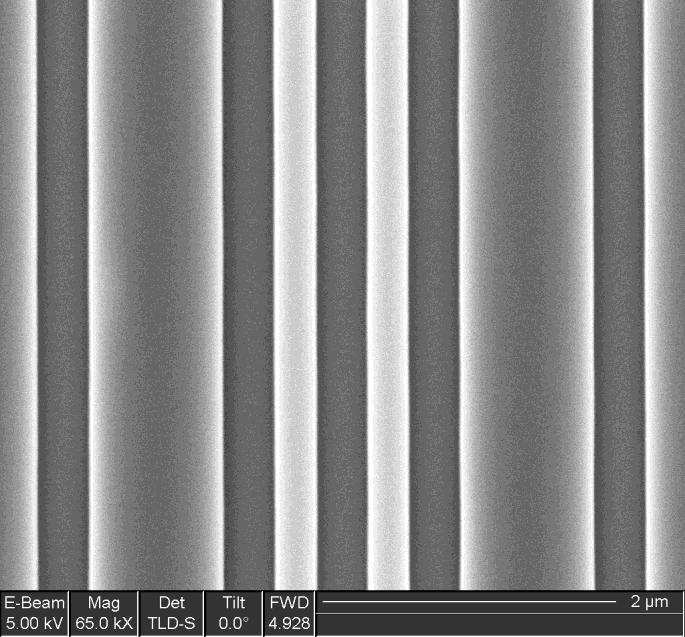 WITH DisCharge: No charge accumulation is observed. The structures appear as expected.
WITH DisCharge: No charge accumulation is observed. The structures appear as expected.
































